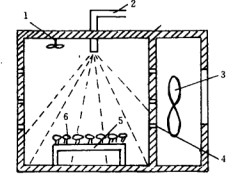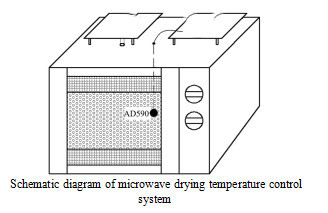Experiment on microwave drying lotus root
1 materials and methods
1.1 materials and reagents
"Beauty Red Lotus Root: In May 2012 by the Jiangsu Province Yangzhou Baoying County Tianhe Food Co., Ltd. Lotus root is tender and tender, with pure white color and no obvious mechanical injury. After washing and peeling lotus root, the lotus root was sliced into 5-6 mm thick slices with stainless steel knife, and immediately soaked in 0.2% citric acid and 0.2% citric acid.
1% sodium chloride color protector, half an hour later take out, blanching in boiling water for 3 minutes, flow water cooled to room temperature, put in 2% maltodextrin solution soaked for 1 hour, take out and drain, put in the refrigerator about - 18, freeze and reserve. The initial moisture content of lotus root slices before microwave drying is about
84%.
Citric acid, sodium chloride, maltodextrin are food grade; ascorbic acid, 2,6-dichloroindophenol, Folin reagent, acetone, sodium bicarbonate, oxalic acid, gallic acid, sodium carbonate are analytical pure.
1.2 instruments and equipment
DHG-9073B5-III Electric Heating Constant Temperature Blasting Drying Box (Shanghai Xinmiao Medical Device Manufacturing Co., Ltd.); MVD-1 Microwave Drying Equipment (Nanjing Xiaoma Mechanical and Electrical Equipment Factory); QDPH-5 Electric Heating Air Expansion Equipment (Tianjin Qinde New Material Technology Co., Ltd.);
QTS texture analyzer (CNS Farnell, UK); FW100 high-speed universal crusher (Tianjin Tester Instrument Co., Ltd.); FA2104 cushion analysis balance (Beijing Saidoris Scientific Instrument Co., Ltd.); WSC-S color difference analyzer (Shanghai Precision Scientific Instrument Co., Ltd.); JSM-
5610LV scanning electron microscope (Japan Electronics);
JFC01600 gold plating instrument (Japan Jeol company).
1.3 test method
The lotus root slices of the same quality were dried by six different drying methods. After microwave drying, the shrinkage, color, texture, VC retention, polyphenol retention and microstructure of the slices were determined.
1.3. 1 drying method
1) the hot air drying (AD) temperature is 60 C and the drying time is 3H.
2) the microwave drying lotus root was 0. 08MPa, microwave power 1200W and drying time 23min.

3) Hot air-vacuum microwave drying (AD-VMD) was dried by hot air at 60 C for 1 h to 40% moisture content, then humidified at 4 C for 18 h, then dried by vacuum microwave at vacuum 0.08MPa and microwave power 1200W. 4) Hot air-pneumatic puffing drying (AD-PD) was dried by hot air at 60 C for 1 h to 40% moisture content, then humidified at 4 C for 18 h. Then, the puffing pressure was 0.11 MPa, the puffing temperature was 85 C, the puffing time was 45 min, the puffing drying temperature was 75 C, the puffing drying time was 90 min, and the pressure in vacuum tank was - 0.095 ~ - 0.1 MPa. Under the condition of airflow puffing and drying.
1.3. 2 Analysis and determination
1) Shrinkage of the sample was measured by 5 g. The sample was quickly put into a 100 mL measuring cylinder with 60 mL water. The sample was immersed in water with a circular plastic sheet. The volume change (V1-V0) was read out within 10 seconds.
2) In order to determine the color of lotus root crisp tablets more accurately, the color difference of lotus root powder was determined by colorimeter after beating it.
L * values (lightness, brightness), varying from 0 to 100, 0 for black, 100 for white; a * values (redness, redness) for the color between red and green, "+" for the color between red and green, "-" for the color of green, the greater the value means the more serious bias; b * values (yellowness, yellowness) for the color between yellow and blue, "+" means yellowish, and "-" means partial blue. 5 samples were taken for each sample and the average value was obtained.
3) VC determination was based on GB / T 6195-86 and 2, 6 - two chlorophenol indophenol method.
4) polyphenols were determined by Folin phenol colorimetry. The standard 10mg of gallic acid from vacuum drying to constant weight was accurately dissolved and dissolved in water and fixed to 100mL. Different concentration gradients were prepared, and 1 mL of the above different concentration solution was added into 10 mL colorimetric tube, and then added in turn.
1mL deionized water, 0. 5mL diluted 2 times of Folin phenol test solution.
The absorbance of Na_2CO_3 solution with 20% Na_2CO_3 at 1.5mL was determined at 760 nm after reaction at room temperature for 2 hours. Total phenolics were determined by gallic acid.
5) The hardness and brittleness were measured by texture analyzer under the following test conditions: probe type: P/5N cylindrical probe; operation mode: measuring force during downpressing; pre-testing speed: 3.0mm s-1; testing speed:
0.5mm - S - 1; after test return speed: 3. 0mm. - 1; test distance: 5mm. The hardness value / N is equal to the peak value of the force in the curve, that is, the maximum force required for the fracture of the sample.